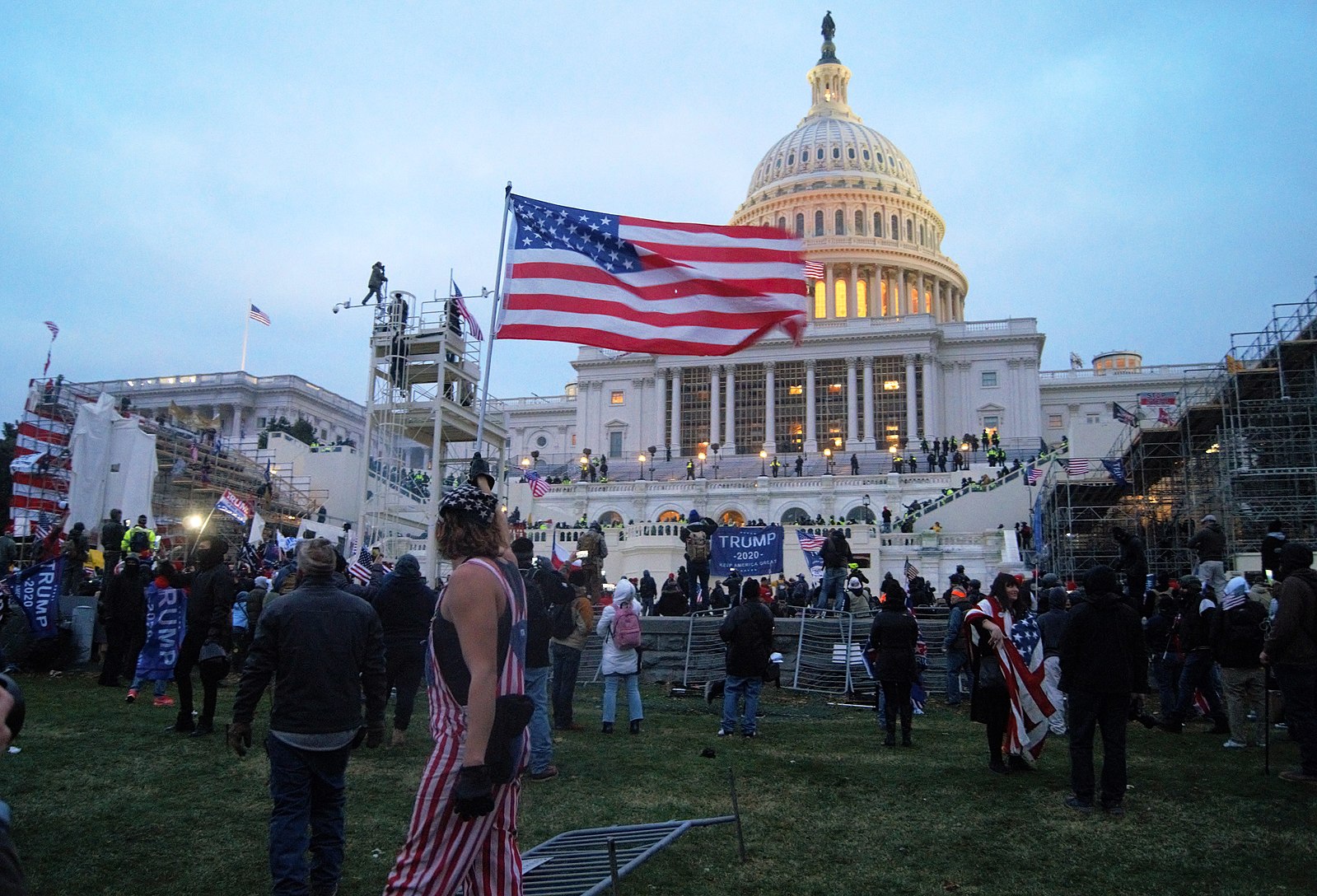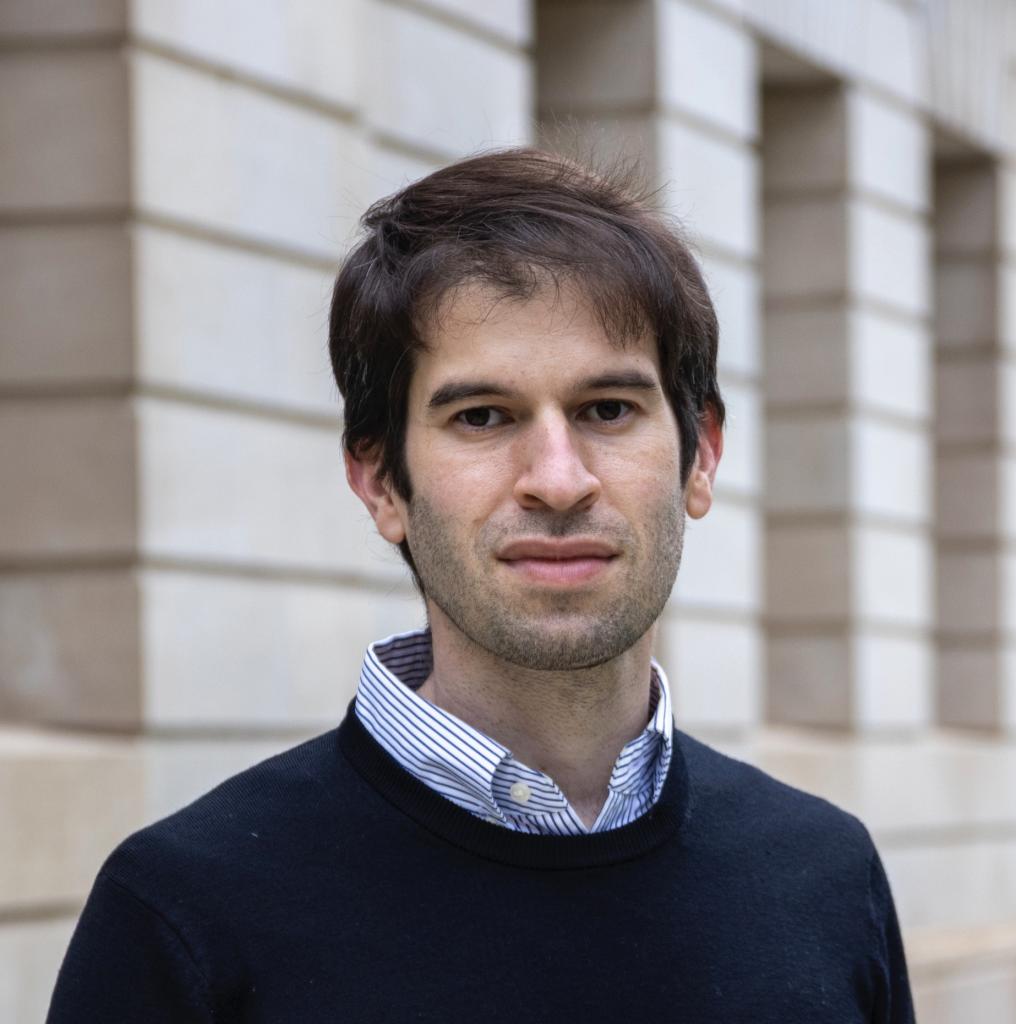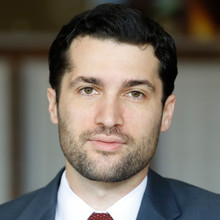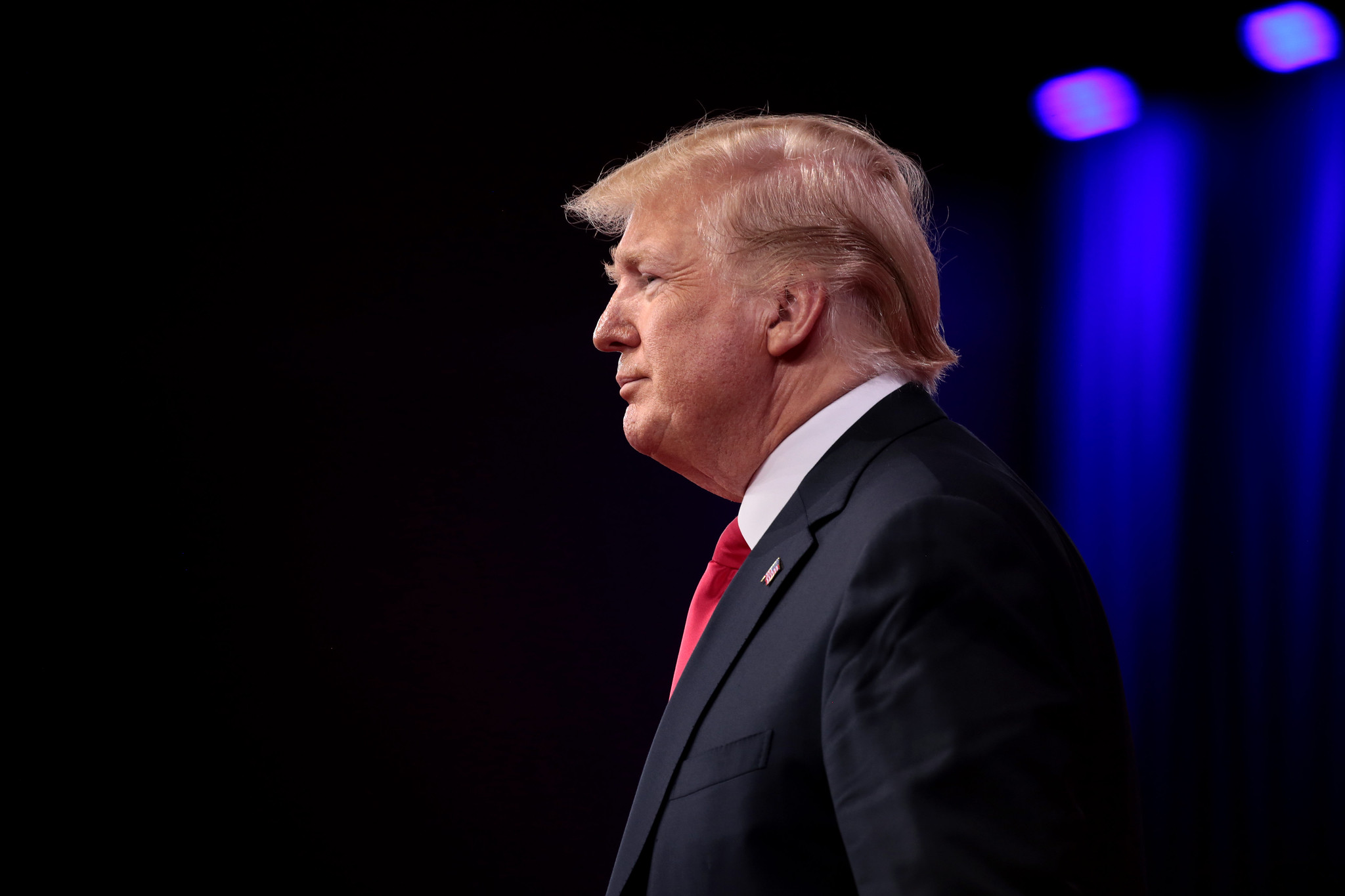Suing Trump Over the Capitol Riot: A Preliminary Assessment
Under a Reconstruction-era statute, a new lawsuit aims to hold former President Donald Trump and others responsible for the events of Jan. 6. But can it succeed?

Published by The Lawfare Institute
in Cooperation With

The Senate’s recent decision not to convict President Trump in the impeachment trial over his role in precipitating the U.S. Capitol riot has renewed interest in other legal mechanisms to hold him and others accountable for the Jan. 6 assault. “President Trump is still liable for everything he did while he was in office, as an ordinary citizen,” Senate Minority Leader Mitch McConnell argued in defending his vote against convicting Trump. “We have a criminal justice system in this country. We have civil litigation. And former presidents are not immune from being held accountable by either one.”
On Feb. 16, Rep. Bennie Thompson, the Democratic chairman of the House Homeland Security Committee, took a first step toward testing this proposition. Represented by the National Association for the Advancement of Colored People (NAACP), he sued Trump, Trump’s former personal lawyer Rudy Giuliani and two violent far-right organizations—the Proud Boys and the Oath Keepers—for their actions leading up to and during the Jan. 6 attack. Specifically, the lawsuit alleges that their actions violated 42 U.S.C. § 1985(1), a Reconstruction-era statute that allows for civil actions against conspiracies aimed at preventing public officials from “holding any office” or “discharging any duties.”
In many ways, § 1985(1) seems well suited to claims arising out of incidents such as the Jan. 6 uprising. The #StoptheSteal group behind the riot, after all, used violence and threats to prevent members of Congress from performing their legal duty of certifying the results of the 2020 presidential election, a clear form of “discharging any duties.” Despite McConnell’s suggestion to the contrary, however, relevant legal immunities and other factors are likely to limit the extent to which Trump himself can be held legally accountable. But the other defendants may not be as lucky, as Thompson seems well positioned to put forward an effective case. Either way, this case is notable in that it marks the high-profile return of a statute that has lain mostly dormant for 150 years but that has returned to disturbing relevance in the current climate of political instability and political violence.
Section 1985(1) in Context
42 U.S.C. § 1985(1) provides:
If two or more persons in any State or Territory conspire to prevent, by force, intimidation, or threat, any person from accepting or holding any office, trust, or place of confidence under the United States, or from discharging any duties thereof; or to induce by like means any officer of the United States to leave any State, district, or place, where his duties as an officer are required to be performed, or to injure him in his person or property on account of his lawful discharge of the duties of his office, or while engaged in the lawful discharge thereof, or to injure his property so as to molest, interrupt, hinder, or impede him in the discharge of his official duties ... the party so injured or deprived may have an action for the recovery of damages occasioned by such injury or deprivation, against any one or more of the conspirators.
The use of 42 U.S.C. § 1985(1) is both fitting and novel: fitting because it was designed exactly for insurrections against duly elected governments but novel because its use has been rare and in unrelated contexts. Although the scope of § 1985(1) is broad, its origins lie in the fight against Southern secessionists in the Civil War and then in the subsequent struggle to maintain the fruits of that victory in the face of the South’s violent undermining of Reconstruction.
Section 1985(1) was established by the 1871 Third Enforcement Act, also known as the Second Ku Klux Klan act—the culmination of a series of measures meant to (and that eventually did) destroy the first Ku Klux Klan. Section 2 of the act, a long and ungainly provision, has since been recodified as several different civil and criminal provisions. On the civil side, most famous is 42 U.S.C. § 1983 which creates a cause of action for civil suits against state governments for violating constitutional rights. Also significant is 42 U.S.C. § 1985(3), which provides a cause of action against private individuals for violations of constitutional rights.
Less well-known, § 1985(1) has the same origin. The language of § 1985(1) is copied from a July 1861 criminal statute passed in the wake of secession and Southern interference with land agents, postmasters and railroad agents. The Second Ku Klux Klan Act reenacted the language from the 1861 criminal provisions, which remain valid today, but also created a new civil cause of action. In the next two decades, the Supreme Court severely undermined important provisions originating in Section 2. But the 19th century court never directly commented on § 1985(1) and seems to have left the provision formally intact. Nonetheless, the civil cause of action and other associated parts of the Third Enforcement Act fell into disuse, perhaps because of § 1985(1)’s association with other provisions that were found at the time to be constitutionally problematic, or because of the collapse of Reconstruction.
The revival of civil rights legislation and jurisprudence in the Second Reconstruction of the 1960s breathed new, albeit faint, life into § 1985(1). The foundational and most far-reaching discussion thus far has been in the 1977 Gypsum case, in which the U.S. Court of Appeals for the Seventh Circuit rejected a cramped reading of the statute that would have limited it to enforcement of the 14th Amendment or to situations in which there is animus based on race or another protected class. The Gypsum case concerned an employment context: An IRS agent sued a company he had been investigating after the company’s complaints caused disciplinary action by the IRS against him. The agent claimed that such complaints and the resulting disciplinary action prevented him from discharging his duties. While the court dismissed the lawsuit on other grounds, it did not raise any objections to using the statute in this context. Subsequent cases have been episodic and have also often concerned government employment.
Although the Supreme Court has never remarked upon § 1985(1), it has ruled on the language of § 1985(2), which in identical language also authorizes civil suits for conspiracies to “deter, by force, intimidation, or threat, any party or witness in any court of the United States.” Like the Seventh Circuit’s Gypsum opinion, in Kush v. Rutledge, the Supreme Court ruled that the language of § 1985(2) (and thus presumably § 1985(1)) does not require “racial ... or otherwise class-based, invidiously discriminatory animus.” Overall, both the original purpose and the (admittedly sparse) subsequent case law suggest that § 1985(1) is well suited for a civil suit against those who can be shown to have conspired in the Jan. 6 storming of the Capitol.
Holding Trump Accountable
In spite of § 1985(1)’s relevance to the Jan. 6 assault on the Capitol, Thompson’s lawsuit may face some insurmountable hurdles in relation to its highest-profile defendant: former President Trump. In its 1982 decision in Nixon v. Fitzgerald, the Supreme Court held that former presidents are entitled to “absolute Presidential immunity from damages liability for acts within the ‘outer perimeter’ of [their] official responsibility”—language often quoted to underscore the breadth of such immunity. Yet as Benjamin Wittes and Steve Vladeck explored in an earlier Lawfare post, this broad scope isn’t necessarily all-encompassing. In Clinton v. Jones, the Supreme Court permitted a civil damages claim against then-sitting President Clinton for conduct predating his time in office on the grounds that such conduct was clearly outside even the “outer perimeter” of the president’s official duties. It is conceivable that conduct occurring during the president’s time in office might similarly fall outside this outer perimeter, though Fitzgerald suggests a strong presumption against such a finding.
Thompson’s complaint is underdeveloped on this point. It goes only as far as suggesting that Trump’s conduct might fall outside this scope because Trump sought to “disrupt the legally required process before Congress to supervise the counting of the Electoral College ballots.” But the suit does not explain why such conduct necessarily falls “beyond the outer perimeter of [the President’s] official duties.” It cannot simply be because such conduct would be illegal. Fitzgerald itself—which shut down a damages claim against President Nixon brought by a service member who claimed to have been terminated in violation of whistleblower protection laws—explicitly rejects such an argument, noting that “[t]his construction would subject the President to trial on virtually every allegation that an action as unlawful” and thus “deprive absolute immunity of its intended effect.” And of course Trump could argue that he sincerely believed that the 2020 election was “stolen,” and that any action on his part to stop the certification of electoral votes was motivated by his (however wrongheaded) understanding of his constitutional responsibilities.
Perhaps Thompson could instead focus on the circumstances surrounding some of Trump’s actions—such as the speech he gave to his supporters at the Ellipse on the morning of Jan. 6—to determine whether Trump did so as part of his presidential duties or his private conduct, which includes his capacity as a candidate for office. In other contexts, the executive branch distinguishes the president’s official activities from those he pursues “to promote the partisan aims of [his] part or candidates of that party[,]” including himself, and one could imagine Thompson advancing a similar argument here. This argument might help achieve one important result: getting jurisdictional discovery relating to Trump’s involvement in the events of Jan. 6 in order to clarify the capacity in which he participated. That said, any such argument seems likely to be an uphill battle in light of Fitzgerald.
But, importantly, Fitzgerald deals only with claims for damages, not the requests for declaratory and injunctive relief—declaring the events of Jan. 6 in violation of § 1985(1) and enjoining the defendants from continuing such violations—that Thompson is also pursuing. But neither of those remedies is a sure thing in relation to Trump. The U.S. Court of Appeals for the D.C. Circuit has been highly skeptical of efforts to pursue declaratory or injunctive relief against a sitting president, though it has declined to foreclose the possibility in cases where a president has a nondiscretionary legal duty. The fact that Trump is no longer president no doubt mitigates many of the separation of powers concerns underlying the D.C. Circuit’s position. But the court may nonetheless resist passing judgment on his actions while in office, particularly if viewed as a discretionary part of his official duties. A forward-looking injunction applicable to Trump’s present and future actions as a private citizen would likely pose fewer concerns. Yet Thompson’s current complaint focuses entirely on the events leading up to and on Jan. 6 without addressing any ongoing conduct of concern on Trump’s part, leaving it somewhat unclear what Thompson seeks to address through the declaratory and injunctive relief he requests.
In light of the above, McConnell’s recent suggestion that civil litigation is a better means than impeachment for holding Trump accountable for the events of Jan. 6 rings especially hollow. The absolute immunity applied in Nixon v. Fitzgerald and other legal factors protect former presidents from many of the legal consequences of their actions while in office, at least those that are part of their official duties. Moreover, the Supreme Court expressly embraced this absolute immunity on the understanding that “the President remains accountable under law for his misdeeds in office” through “[t]he remedy of impeachment[.]” By refusing to wield this remedy against former presidents, McConnell and other Senate Republicans have created a gap in this accountability framework. And while McConnell might be generously understood to be suggesting that Trump’s actions in relation to Jan. 6 were outside the scope of his official duties and thus not subject to immunity, this too may well prove to be an overly (and perhaps deliberately) optimistic reading of the law.
The Prospects for Thompson’s Case
None of the other defendants named in Thompson’s complaint benefits from the immunity and other legal protections provided to presidents. For them, Thompson’s claims will likely rise and fall on the same legal questions applicable to any civil defendant. And there are good reasons to believe Thompson may succeed.
As in any federal case, a threshold question will be whether Thompson has standing under Article III. While other lawsuits by members or parts of Congress have at times foundered on questions of congressional standing, this has generally been in cases where legislator-plaintiffs have alleged an institutional injury to Congress as a whole (for example, where legislators have sued over legislation giving the president a line-item veto), an injury that the Supreme Court has found to be inadequately “concrete and particularized” for standing purposes, given the significant separation of powers questions implicated by such a case.
But Thompson’s standing as to his damages claim is much more individualized and quite straightforward. The Capitol riot is unique in that it harmed members in their personal as well as official capacities, and interfered with their individual capacities to execute the duties of their elected offices, not just the institutional capacity of Congress as a whole. Thompson is, after all, a member of Congress and his complaint makes clear how it affected him directly: “During this entire time [of the Capitol siege], Plaintiff Thompson reasonably feared for his physical safety. While trapped in the building, during the siege by the rioters that Defendants unleashed on the Capitol, Plaintiff Thompson feared for his life and worried that he might never see his family again.” It’s hard to imagine a clearer case for standing in relation to the events of Jan. 6.
That said, there may yet be some complications in relation to Thompson’s requests for a declaratory judgment confirming that the defendants’ violated § 1985(1) and a permanent injunction “enjoining [them] from engaging in future violations of 42 U.S.C. § 1985(1)[.]” Standing doctrine requires the plaintiff to identify the future harm and how the injunctive relief would remedy that harm. But as mentioned above, the current version of the complaint does not identify what exact ongoing conduct or outstanding legal question it wants the court to remedy. In at least one prior similar case involving a former president, the D.C. district court concluded that such an omission was reason enough to dismiss a plaintiff’s claims. But given the ongoing security concerns around the U.S. Capitol complex, it is not hard to imagine what such conduct might look like, and Thompson may yet develop it more through future briefing or an amended complaint.
Once standing is established, the main question for the defendants will be whether the statutory elements of § 1985(1) can be satisfied. Most of the elements should be easy to satisfy. For example, the rioters certainly acted “by force, intimidation, or threat,” and Thompson, like all members of Congress, was prevented from “discharging [his] duty” of certifying the electoral votes and was “induce[d] ... to leave ... a place” (the House floor) to avoid the rioters. Given the threat of violence to members of Congress, their staff, and their offices that the Jan. 6 rioters presented—and the fact that the rioters’ express purpose was to prevent Congress from fulfilling its constitutional and statutory duty to certify the results of the 2020 presidential elections—§ 1985(1)’s coverage of injury or property damage plausibly also apply.
The element that will likely be in dispute is whether the actions of Trump and Giuliani (and, to a lesser extent, those of the Proud Boys and the Oath Keepers) constitute conspiracy—specifically civil conspiracy (since this is a civil lawsuit, not a criminal case). The Restatement (Second) on Torts identifies as the key element of conspiracy that “the defendant made an agreement with another to commit a wrong” (Restatement §27). Importantly, the agreement need not be explicit but can instead be tacit. In addition, defendants are responsible for the actions of their co-conspirators, even if they did not plan or intend those specific actions.
But conspiracy defendants “must have a shared objective” and “[t]he defendant held liable as part of the conspiracy must have intended to bring about the tortious wrong that was the subject of the agreement.” Here, the tort is to “to prevent, by force, intimidation, or threat” one of the § 1985 predicates. Based on the planning alleged in the complaint, this should be relatively straightforward to establish in the case of the Oath Keepers and the Proud Boys, two of the named defendants. Establishing this as to Giuliani (or Trump, assuming his immunity claim fails) will be more difficult, as their degree of coordination with the Oath Keepers and Proud Boys remains unknown. This very topic may reasonably become the subject of discovery as the litigation proceeds, which would serve another public purpose separate and apart from holding the defendants accountable by clarifying the historical record as to what took place on Jan. 6.
Even if Trump and Giuliani’s coordination with the Oath Keepers and Proud Boys is confirmed, they may argue that the riot on Jan. 6 wasn’t something they had knowingly supported and thus is outside the scope of whatever conspiracy may have taken place. The complaint heavily emphasizes baseless comments about voter fraud and inflammatory comments made by Trump and Giuliani, including the latter’s comments advocating “trial by combat,” but both Trump and Giuliani will likely argue that these comments were meant metaphorically and not literally. The available facts may ultimately only be able to show that Trump and Giuliani were reckless or negligent in whipping up the mob they had helped to assemble with these sorts of remarks. Courts differ on the extent to which recklessness and negligence can be used to establish vicarious liability, making this a possible part of their defense.
That said, in the D.C. Circuit where Thompson has filed, participants in a civil conspiracy may be held vicariously liable for “injuries caused by acts pursuant to or in furtherance of the conspiracy[,]” even where they did not “participate actively” or might “not even have planned or known about the injurious action[.]” If Trump and Giuliani are shown to have participated in the conspiracy with the intent of disrupting Congress’s certification of the presidential election results on Jan. 6, it’s not clear whether their failure to anticipate the potential violent results of their actions will spare them from liability. And Giuliani does not benefit from the same protections Trump does and may find himself on the hook for his former client.
* * *
Beyond its application to the events of Jan. 6, Thompson’s lawsuit may end up having broader significance. The storming of the Capitol may well mark the beginning, not the end, of a period of increased political violence, and so there may yet be more events to which § 1985(1) is especially suitable. In this sense, Thompson’s lawsuit may serve as an important precedent for how this statute can be used responsibly—and perhaps help restore some element of the accountability so many feel is lacking.
Correction: An earlier version of this article had an incomplete quotation of 42 U.S.C. § 1985(1).







